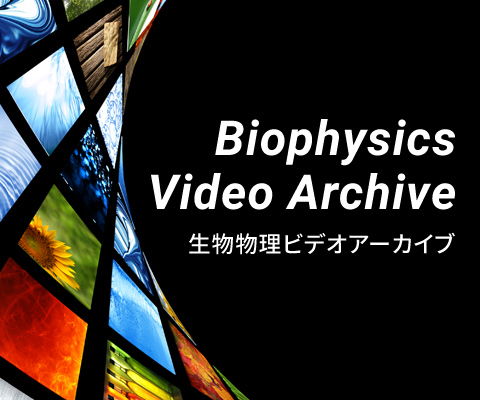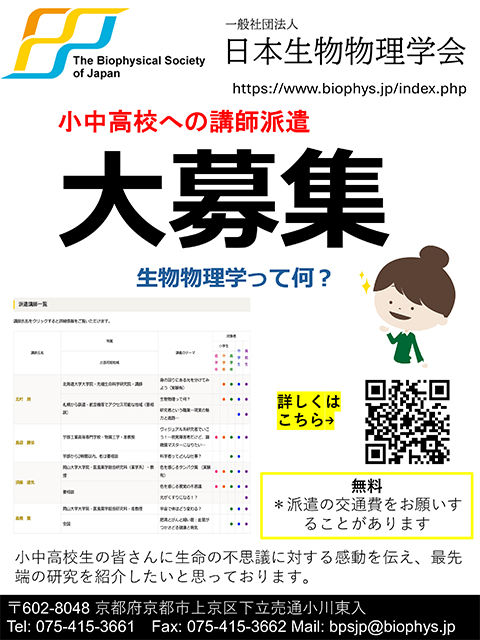男女共同参画学協会連絡会
支援企業による広告記事
- ソーラボジャパン株式会社
- CAD を使って光学装置を設計してみよう
- 「生物物理」2025年10月号
- ソーラボジャパン株式会社
- 次世代2光子顕微鏡―小型化がもたらす新たな可能性
- 「生物物理」2024年10月号
- ソーラボジャパン株式会社
- サイエンティフィックカメラと周辺機器の同期
- 「生物物理」2023年10月号
- ソーラボジャパン株式会社
- 顕微鏡のリノベーション ~ 顕微鏡ポートを活用した光学系の導入
- 「生物物理」2022年12月号
「Biophysics and Physicobiology」に Elena G. Govorunova, Oleg A. Sineshchekov, John L. Spudich による "Potassium-selective channelrhodopsins" をJ-STAGEの早期公開版として掲載
2023年02月04日 学会誌
日本生物物理学会欧文誌[Biophysics and Physicobiology]に以下の論文が早期公開されました。
Elena G. Govorunova, Oleg A. Sineshchekov, John L. Spudich
"Potassium-selective channelrhodopsins"
URL:https://doi.org/10.2142/biophysico.bppb-v20.s011
- Abstract
- Since their discovery 21 years ago, channelrhodopsins have come of age and have become indispensable tools for optogenetic control of excitable cells such as neurons and myocytes. Potential therapeutic utility of channelrhodopsins has been proven by partial vision restoration in a human patient. Previously known channelrhodopsins are either proton channels, non-selective cation channels almost equally permeable to Na+ and K+ besides protons, or anion channels. Two years ago, we discovered a group of channelrhodopsins that exhibit over an order of magnitude higher selectivity for K+ than for Na+. These proteins, known as “kalium channelrhodopsins” or KCRs, lack the canonical tetrameric selectivity filter found in voltage- and ligand-gated K+ channels, and use a unique selectivity mechanism intrinsic to their individual protomers. Mutant analysis has revealed that the key residues responsible for K+ selectivity in KCRs are located at both ends of the putative cation conduction pathway, and their role has been confirmed by high-resolution KCR structures. Expression of KCRs in mouse neurons and human cardiomyocytes enabled optical inhibition of these cells’ electrical activity. In this minireview we briefly discuss major results of KCR research obtained during the last two years and suggest some directions of future research.
URL: https://doi.org/10.2142/biophysico.bppb-v20.s011







